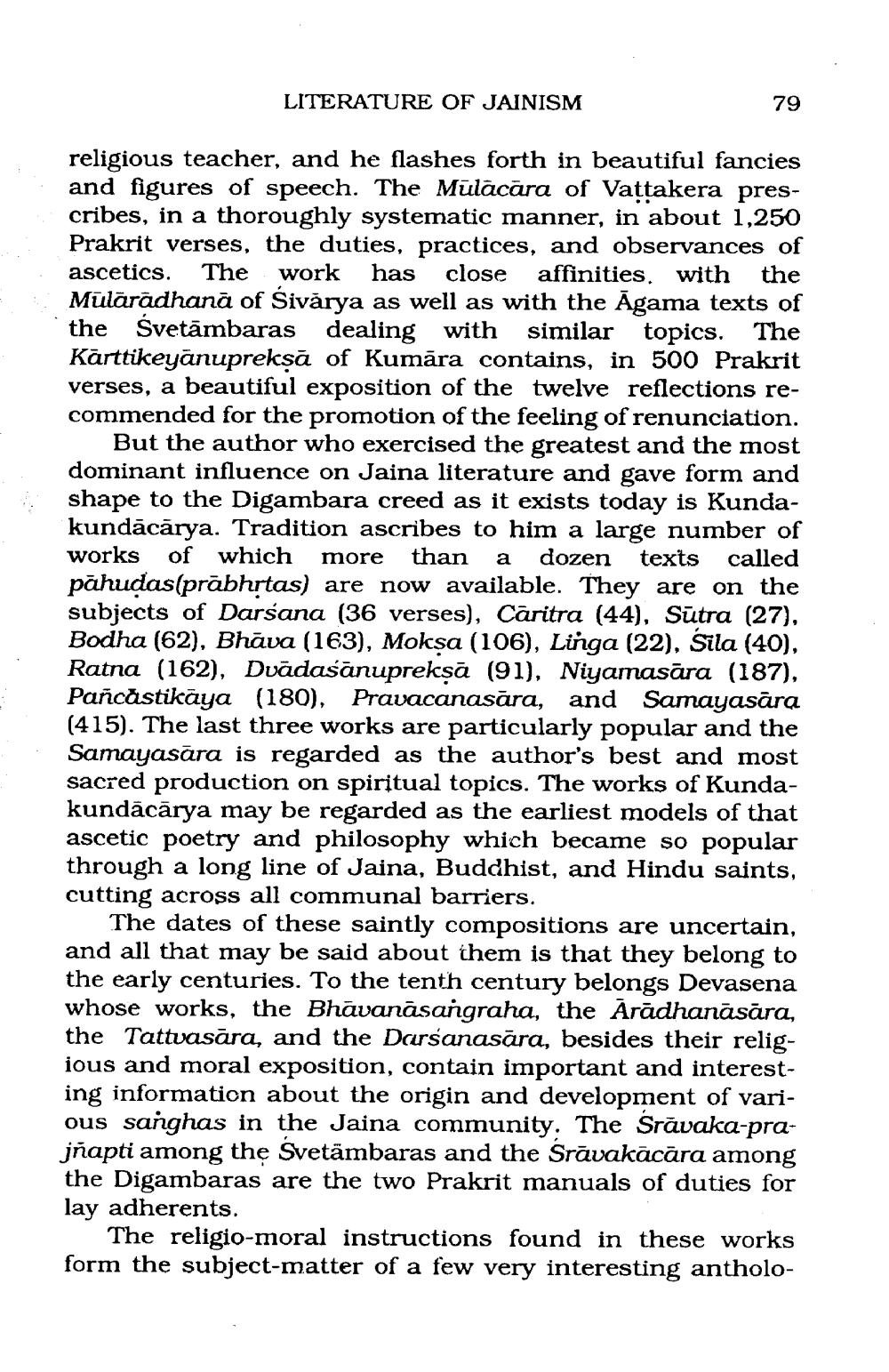________________
LITERATURE OF JAINISM
79
religious teacher, and he flashes forth in beautiful fancies and figures of speech. The Mulācāra of Vattakera prescribes, in a thoroughly systematic manner, in about 1,250 Prakrit verses, the duties, practices, and observances of ascetics. The work has close affinities with the Mulārādhanā of Sivărya as well as with the Āgama texts of the Svetāmbaras dealing with similar topics. The Karttikeyanupreksā of Kumāra contains, in 500 Prakrit verses, a beautiful exposition of the twelve reflections recommended for the promotion of the feeling of renunciation.
But the author who exercised the greatest and the most dominant influence on Jaina literature and gave form and shape to the Digambara creed as it exists today is Kundakundācārya. Tradition ascribes to him a large number of works of which more than a dozen texts called pähudas(prabhrtas) are now available. They are on the subjects of Darsana (36 verses), Caritra (44), Sūtra (27), Bodha (62), Bhāva (163), Moksa (106), Linga (22), Sila (40), Ratna (162), Dvadasānupreksā (91), Niyamasāra (187), Pañcăstikaya (180), Pravacanasara, and Samayasāra (415). The last three works are particularly popular and the Samayasara is regarded as the author's best and most sacred production on spiritual topics. The works of Kundakundācārya may be regarded as the earliest models of that ascetic poetry and philosophy which became so popular through a long line of Jaina, Buddhist, and Hindu saints, cutting across all communal barriers.
The dates of these saintly compositions are uncertain, and all that may be said about them is that they belong to the early centuries. To the tenth century belongs Devasena whose works, the Bhāvanasangraha, the Aradhanasara, the Tattvasāra, and the Darsanasāra, besides their religious and moral exposition, contain important and interesting information about the origin and development of various sanghas in the Jaina community. The Sravaka-prajnapti among the Svetämbaras and the Sravakācāra among the Digambaras are the two Prakrit manuals of duties for lay adherents.
The religio-moral instructions found in these works form the subject-matter of a few very interesting antholo




